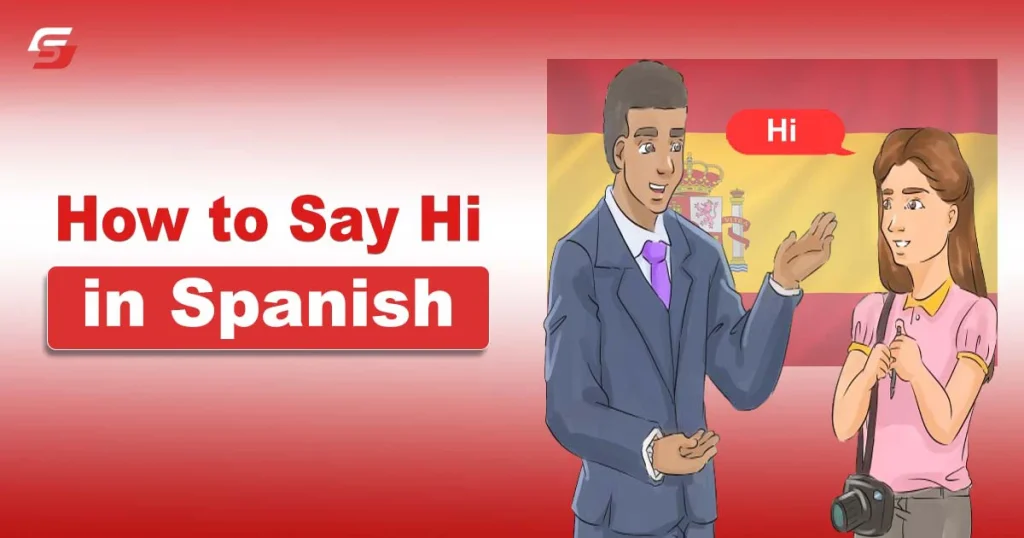One of the fundamental parts of a language is the ability to greet people. Usually, it’s brief and simple to recall. The same case is with the Spanish language. However, there are several ways to say the greetings word in this language. This is a result of its extreme diversity and global speech patterns.
So, in this article, we are going to discuss how to say hi in Spanish. We will provide 9 best and most interesting ways of doing so. Let’s start.
How to Say Hi in Spanish?
Here are 9 ways of saying “Hi” in this language.
1. Hola:
It is the most basic way of greeting someone in Spanish. It’s also very easy to remember. That is because it resembles the English word “Hello.” Both of them mean the same. The term “Hola” has the remarkable property of being used in practically every Spanish-speaking country in the globe.
2. Bueno:
If you look at the actual translation of this “Bueno”, it is “Good”. But it can be used for greeting context as well. It is usually spoken in areas of Mexico. Also, it’s more appropriate to use it while answering the phone.
But natives may understand its context even if you say it to them in person. Just keep in mind that it is a casual way of answering the phone. So, avoid using it if you are speaking with some official authority.
3. Pura Vida:
If you truly want to learn how to say hi in Spanish, you have to stick the word “Pura Vida” with your brain. That is because it is a very versatile word/phrase.
It is used in Costa Rica mostly. It translates to “Pure Life” but is used to say hi to each other. This is also a casual way of doing this. You may hear people saying it everywhere on the streets. It is also used for saying “goodbye”, “how are you?”, and “All is well!”
4. Buenas:
Another versatile word you can use in this context is “Buenas”. It is used in almost all Spanish-speaking communities. It’s actually a short form of the words “Buenas dias” “Buenas trades”, and “Buenas noches”. They are used to say good morning/afternoon/evening. The short form is casually used to say hi.
5. Éspale:
Éspale is used in the country of Venezuela. It can be used informally to greet people of all ages. This means Hi or What’s up! You can use it at any time of the day. It doesn’t have any time boundaries related to it.
6. ¿Qué onda?
“¿Qué onda?” is a very informal way of saying Hi in Spanish language. You can consider it the alternative of What’s up? in English. It can also be considered as What’s the vibe?
That is because its word translation is “What wave?” However, people of Latin America use it to greet their loved ones casually. There is no direct response that you can give in return to this phrase. That is because it’s usually used without the expectation of getting an answerback.
You may also like to read ICL Meaning in Different Contexts (Explained)
7. ¿Qué bolá?
“¿Qué bolá?” is one of the most unique ways of saying Hi. That is because it is only used in Cuba. The Spanish language has a similar pronunciation of the letters B and V. So, the word here will be Vola. This translates to “to fly”. So, the overall word means “How does it fly?” It’s the same as saying “How’s it going?” in English.
8. Oye:
Consider using the word “Oye” as a shorthand for “Hello.” It’s regarded as one of the least formal ways to welcome someone in Spanish. That is because it means “Hey” or “Hear.” It’s a good way of calling someone who is at a distance. This word is also used in all the Spanish regions.
10. Habla:
Last but not least, you can use the word “Habla”. It translates to “Speak”. Yet, it is used as a greeting word in Peru. So, if you’re in that region, you can use it for a formal Hi.
Concluding it
In conclusion, knowing how to say Hi in Spanish is a basic thing you should learn if you are interested in this language. You can say it in different ways due to the language’s versatility. It also varies according to the region. So, we have discussed 9 different ways you an say it. Most of them are informal so be careful while using them.
Frequently Asked Questions (FAQs):
Are there more than 9 ways to say Hi in Spanish?
Yes. There are several other ways as well. However, these are the most native and relevant ones.
Is it okay to use these words in writing?
Yes. However, you should not use it for formal writing purposes.
Can people of all Spanish-language countries understand these words?
Yes, and no. Some phrases may not be considered as greetings in some regions.










